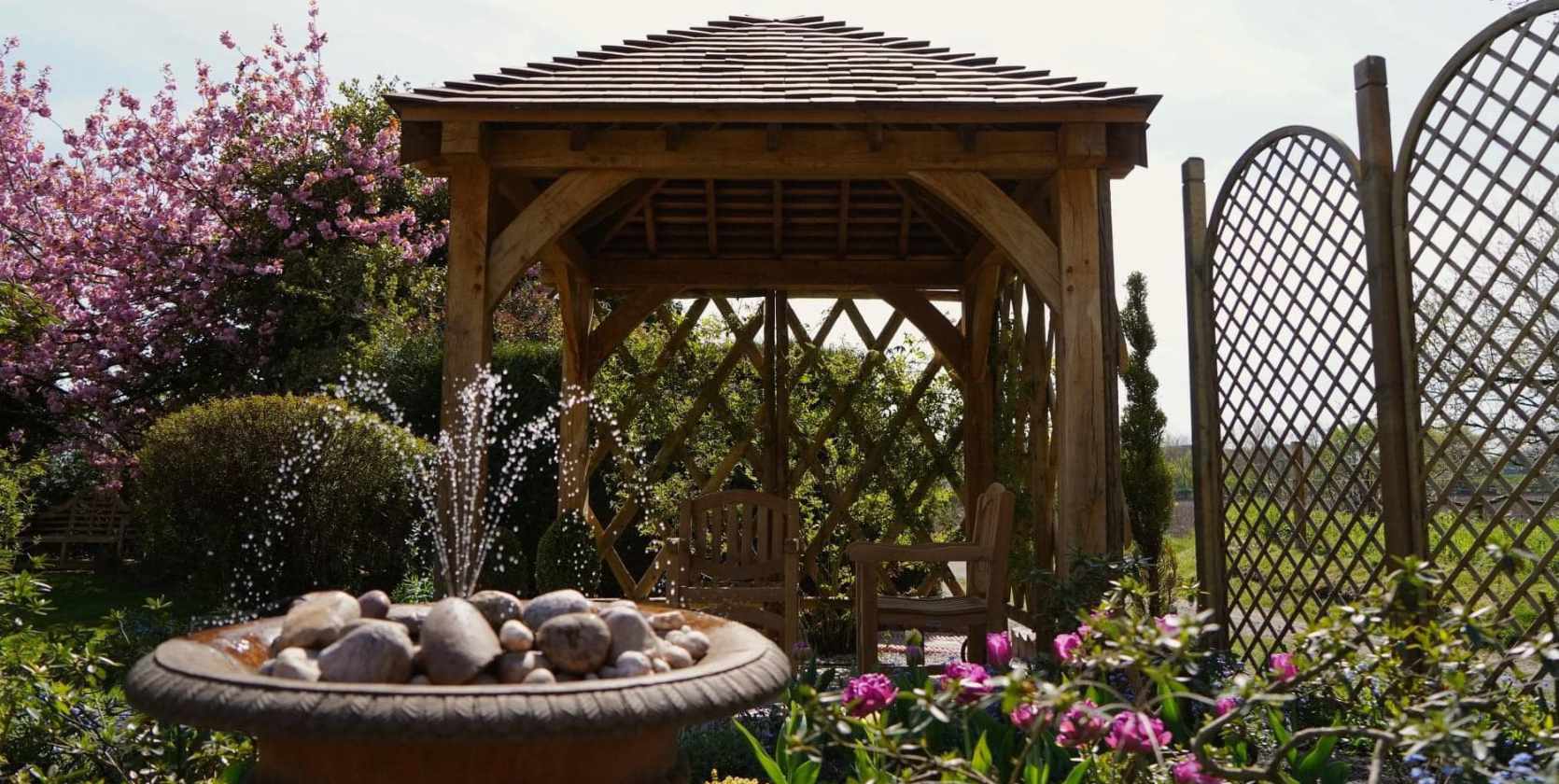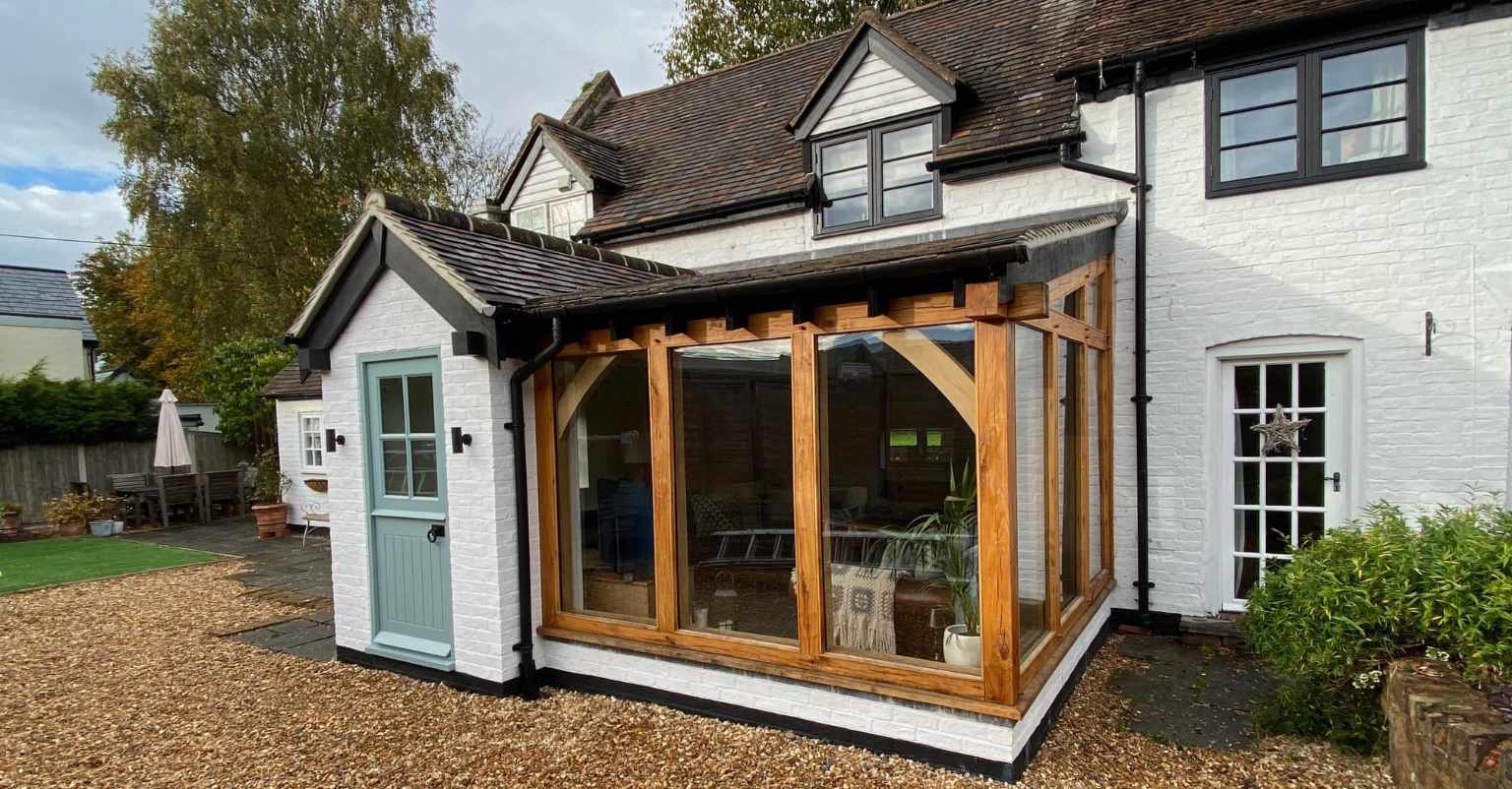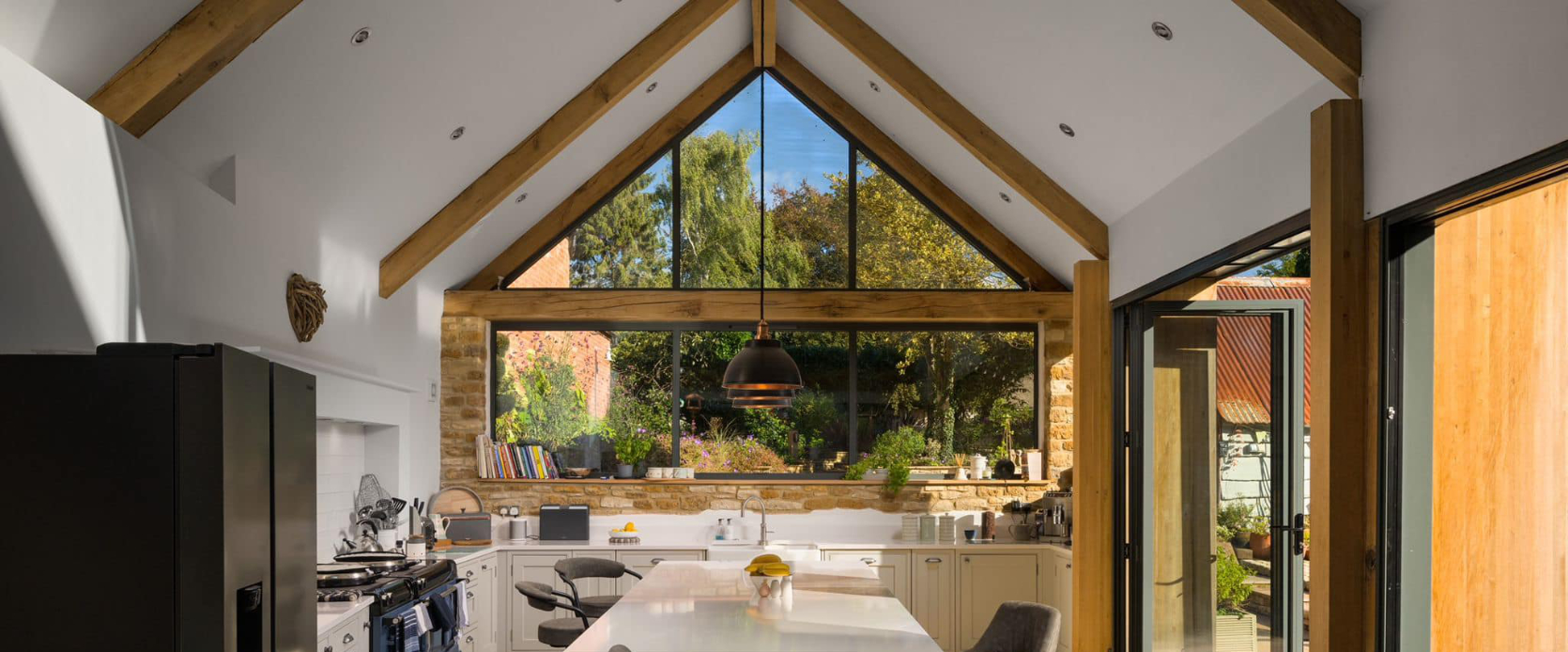What is Green Oak – How Does this Differ from Air Dried and Kiln Dried Oak?
Contents
If you’re contemplating renovating, refurbishing, or redecorating your home with an oak structure, you may have come across green oak and seasoned oak in your research.
But what does this mean? What’s the difference and which one should you choose?
We take a look at the different types of oak you can work with, including green oak, air dried oak, and kiln dried oak. We cover what each type is, their advantages and disadvantages, and where and when you should use them.

What Is Green Oak?
One of the most common types of oak used for construction is green oak. Green oak refers to oak that has been felled within the last 18 months, meaning it has a naturally high moisture content and has not undergone any drying treatments to reduce its moisture content.
Specifically, the moisture content of green oak is around 60-80% - however this will decrease over time as the felled oak matures and dries.
Advantages and Disadvantages of Green Oak
Because of its high moisture content, green oak is easy to handle when cutting and shaping the timber for its application, reducing the chance of damaged or wasted timber whilst it is being prepared.
Another advantage of using green oak for your construction project is that as the oak begins to dry in its application, it will also strengthen.
However, this process means the oak will shrink in size as it loses moisture, which should be accounted for in your design and construction.
Another disadvantage of using green oak is that it can be vulnerable to staining as it dries; this is due to the tannins in the wood, which can be exacerbated when in contact with iron. However, treatments and proper handling of the oak minimises the chances of this.
Common Applications for Green Oak
Enville Oak uses green oak for buildings and constructions that do not include any form of glazing. This is because green oak is not suitable for use alongside glass as it shrinks and settles in its application.
Green oak is better used for:
● Open porches
● Pergolas & Gazebos
● Garages

What Is Air Dried Oak?
Another type of oak used in construction is air dried oak. This refers to felled oak which has been left to naturally dry; oak which has begun the drying process is often referred to as seasoned oak. We say it has “begun” the process of drying because air dried oak is not a completely dry material; its moisture content is around 20-30%.
Air dried oak is commonly used alongside or in replacement of green oak in construction projects, as it complements its freshly felled counterpart with a range of advantages…
Advantages and Disadvantages of Air Dried Oak
One of the biggest advantages of air dried oak is its ability to be used in structural applications. Air dried oak has already begun the drying process, so it experiences minimal shrinkage and has increased strength. Its maturity also means air dried oak will not change in appearance as much as green oak.
However, air dried oak does come at a cost. Its drying process is very slow – drying just 25 mm of thickness takes about one year – making it more expensive and not as readily available.
Common Applications for Air Dried Oak
Enville Oak uses air dried oak for applications that include glazing, such as:
● Garden rooms
● Orangeries
● Glazed porches

What is Kiln Dried Oak?
Kiln-dried is another type of seasoned oak. As the name suggests, this timber has been dried inside of a kiln, accelerating the drying process. Kilns are used to dry the timber through air circulation and/or heat and humidity control.
Kiln-dried oak has a much lower moisture content than other types of oak, with its moisture content sitting around 8-10%. Of course, this comes with benefits and drawbacks to consider when using kiln-dried oak in your home renovation project.
Advantages and Disadvantages of Kiln Dried Oak
The speed of kiln dried oak is an obvious advantage – to dry 25 mm, kiln drying only takes one week, as opposed to a year when air drying. However, it is a more expensive process to undertake. It is also a more controlled process than air drying.
However, this level of control and expertise is necessary, because kiln drying oak can come with a few risks. Due to the speed of drying, stress can be placed on the oak which can result in weakness, twisting, or bowing of the wood.
Properties and Uses of Kiln Dried Oak
Kiln dried oak is used in indoor applications such as doors, windows and cill boardings; this is because of its low moisture content, making it suitable for drier environments.

Green Oak vs Air Dried Oak vs Kiln Dried Oak
When deciding which oak type is best for your project, there are some factors to consider to ensure you’re choosing the right timber.
Consider:
● The application – this will determine the need for a certain strength and flexibility for shrinkage.
● The environment – the moisture content of the oak should be suitable for its environment, otherwise it will lead to increased swelling or shrinkage of the wood.
● The cost – make sure your oak aligns with your budget for the project.
● The characteristics – if you’re seeking a particular look or feel for your home, certain oak types will suit better than others. We break down the appearances of each oak type below…
Comparing the Characteristics of Green, Air Dried, and Kiln Dried Oak
Oak has a naturally warm, golden appearance that can be enhanced or changed through oils and other treatments, which aren’t necessary but may be preferable for some.
Green oak is true to this natural golden appearance; however, it will silver as it matures and dries, if left without treatment.
Because air dried and kiln dried oak have already begun the maturing process, they won’t undergo this change in appearance as noticeably as green oak. However, these two seasoned oak types do have slightly different appearances.
Air dried oak has a more rustic and aged look, whilst kiln dried oak has a cleaner and more contemporary look.
So, Which Should You Choose?
Now that we’ve compared the three most popular types of oak for construction projects, you should be more confident in picking the right oak type for your project.
Bringing oak into your space can be a valuable, beautiful and unique step to take, however ensuring you’re using the right material is crucial to keeping expenses to a minimum and making certain your structure is long lasting.
If you’re in any doubt, you should always consult an expert for their advice or service in bringing your renovation and refurbishment plans to life. Our expert team is on hand to help answer your questions. Get in touch today.
Interested in this article? Read others like it...